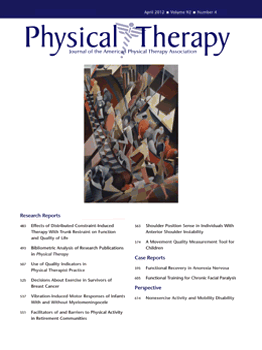
PHYSICAL THERAPY & REHAB
Effect of trigger point dry needling on patients with plantar heel pain
This report has been verified
by one or more authors of the
original publication.
Phys Ther. 2014 Aug;94(8):1083-94
84 patients, >18 years of age, who had been suffering from plantar heel pain for at least 1 month prior to study initiation, were randomly assigned into an intervention or sham group, to determine the effect trigger point dry needling had on plantar heel pain and other important patient outcomes. Outcomes were assessed during treatment (2, 4, and 6 weeks), as well as at 12 weeks (6 weeks after treatment completion). At 6 weeks, results demonstrated that patients treated with dry needling experienced statistically significant improvements in first-step pain and foot pain when compared to sham patients; however, the difference between groups regarding these outcomes was lower than the minimal clinically important difference. The incidence of minor transitory adverse events was significantly greater in the real dry needling group when compared to the sham group, largely due to the incidence of needle site pain).
Unlock the full ACE Report
You have access to {0} free articles per month.Click below to unlock and view this {1}
Unlock NowCritical appraisals of the latest, high-impact randomized controlled trials and systematic reviews in orthopaedics
Access to OrthoEvidence podcast content, including collaborations with the Journal of Bone and Joint Surgery, interviews with internationally recognized surgeons, and roundtable discussions on orthopaedic news and topics
Subscription to The Pulse, a twice-weekly evidence-based newsletter designed to help you make better clinical decisions
Exclusive access to original content articles, including in-house systematic reviews, and articles on health research methods and hot orthopaedic topics
Or upgrade today and gain access to all OrthoEvidence content for just $1.99 per week.
Already have an account? Log in


Subscribe to "The Pulse"
Evidence-Based Orthopaedics direct to your inbox.
{0} of {1} free articles
Become an OrthoEvidence Premium Member. Expand your perspective with high-quality evidence.
Upgrade Now













































































